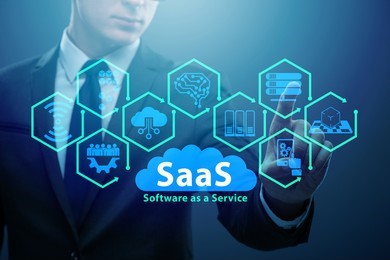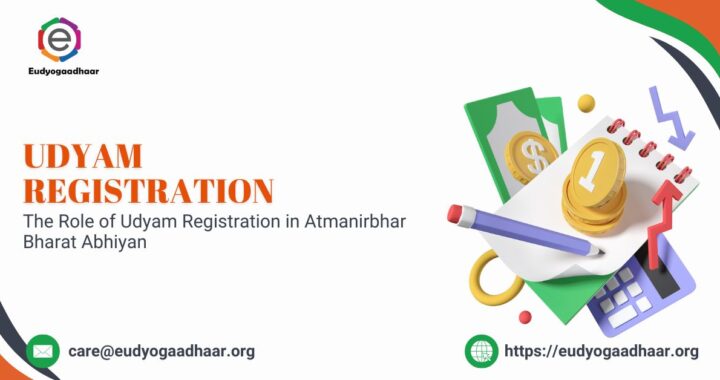Content Marketing Secrets for a Successful SaaS Marketing Strategy

Content marketing is a powerful tool for driving growth and engagement in the Software as a Service (SaaS) industry. A well-crafted content marketing strategy can help SaaS companies attract, convert, and retain customers more effectively than traditional marketing methods. This article delves into the secrets of successful SaaS content marketing, providing a comprehensive guide for marketers aiming to optimize their strategies.
Understanding SaaS Content Marketing
Definition and Core Principles
SaaS Content Marketing involves creating and distributing valuable, relevant, and consistent content to attract and engage a clearly defined audience with the ultimate goal of driving profitable customer action. Unlike traditional content marketing, which may focus on a broad range of products and services, SaaS content marketing is specifically tailored to the unique challenges and opportunities within the software industry.
Setting Clear Goals and Objectives
Importance of Goal Setting
Setting clear, measurable goals is the foundation of any successful content marketing strategy. Goals provide direction, help track progress, and enable marketers to adjust tactics as needed to achieve desired outcomes.
Common Goals for SaaS Content Marketing
- Increasing brand awareness
- Generating high-quality leads
- Converting leads into customers
- Retaining existing customers
- Enhancing customer satisfaction and loyalty
How to Define and Measure Success
To define success, marketers should establish Key Performance Indicators (KPIs) that align with their goals. Common KPIs for SaaS content marketing include website traffic, lead generation, conversion rates, customer retention rates, and customer satisfaction scores. Regularly reviewing these metrics allows for data-driven decisions and continuous improvement.
Identifying Target Audience
Importance of Knowing Your Audience
Understanding your target audience is crucial for creating content that resonates and drives engagement. A deep knowledge of your audience’s needs, preferences, and pain points enables you to craft messages that address their specific challenges and interests.
Creating Buyer Personas
Buyer personas are fictional representations of your ideal customers, based on market research and real data about your existing customers. These personas help guide content creation by providing a clear picture of who you are targeting.
Audience Segmentation Strategies
Segmenting your audience allows you to tailor content to different groups based on characteristics such as industry, company size, job role, and stage in the buyer’s journey. This targeted approach increases the relevance and effectiveness of your content.
Content Marketing Funnel for SaaS
Awareness Stage
At the top of the funnel, the goal is to attract potential customers by raising awareness of your brand and solutions. Content should focus on addressing common pain points and providing valuable information that draws prospects in.
Consideration Stage
In the middle of the funnel, prospects are evaluating different solutions. Content should highlight your product’s features, benefits, and unique selling points, helping potential customers understand why your solution is the best fit for their needs.
Decision Stage
At the bottom of the funnel, prospects are ready to make a purchase decision. Content should focus on removing any final objections and encouraging action, such as through case studies, testimonials, and free trials.
Retention Stage
After a purchase, the focus shifts to retaining and delighting customers. Content should aim to enhance the customer experience, provide ongoing education, and encourage repeat business and referrals.
SEO Best Practices for SaaS Content
Importance of SEO in SaaS
SEO is critical for driving organic traffic to your website and increasing visibility in search engine results. A strong SEO strategy helps attract high-quality leads and establishes your brand as an authority in the industry.
Keyword Research
Keyword research involves identifying the terms and phrases your target audience uses when searching for solutions related to your product. Tools like Google Keyword Planner and Moz can help identify relevant keywords with high search volume and low competition.
On-Page SEO Techniques
On-page SEO involves optimizing individual web pages to rank higher and earn more relevant traffic. Key techniques include using target keywords in titles, headers, and meta descriptions, optimizing images with alt text, and ensuring a fast, mobile-friendly website.
Off-Page SEO Strategies
Off-page SEO focuses on improving your site’s authority and trustworthiness through activities outside your website. This includes building high-quality backlinks, engaging in social media marketing, and leveraging influencer partnerships.
Content Distribution Strategies
Organic Distribution Channels
Organic distribution involves sharing content through non-paid channels, such as your website, social media platforms, email newsletters, and SEO. This approach leverages your existing audience and networks to drive engagement and traffic.
Paid Advertising
Paid advertising can amplify your content reach and target specific audiences. Options include pay-per-click (PPC) campaigns on search engines, social media ads, and sponsored content. These strategies can drive immediate traffic and generate leads quickly.
Email Marketing
Email marketing is a powerful way to distribute content directly to your audience. Building and segmenting your email list allows for personalized content delivery, increasing engagement and conversions. Regular newsletters, promotional emails, and automated drip campaigns are effective tactics.
Social Media Promotion
Promoting content on social media platforms helps reach a wider audience, drive traffic, and engage with followers. Sharing blog posts, videos, and other content types across platforms like LinkedIn, Twitter, and Facebook can boost visibility and interaction.
Building a Community
Importance of Community Building
Building a community around your brand fosters loyalty, engagement, and advocacy. A strong community can provide valuable feedback, support other customers, and act as brand ambassadors, enhancing your marketing efforts.
Strategies to Engage with Your Audience
Engagement strategies include hosting webinars, participating in industry forums, creating interactive content, and encouraging user participation through polls, surveys, and social media discussions. Regularly responding to comments and feedback also strengthens community ties.
Utilizing Forums and Online Groups
Participating in forums and online groups relevant to your industry can help establish your brand as a thought leader. Sharing valuable insights, answering questions, and engaging in discussions can drive traffic to your website and build relationships with potential customers.
Content Repurposing Strategies
Benefits of Repurposing Content
Repurposing content maximizes the value of your existing assets, saves time, and reaches new audiences. It involves transforming content into different formats, extending its lifespan, and enhancing its impact.
Different Ways to Repurpose Content
Ways to repurpose content include turning blog posts into infographics, videos, or podcasts, creating social media snippets from long-form content, and compiling related articles into eBooks or whitepapers. This approach ensures consistent messaging across channels.
Tools for Content Repurposing
Tools like Canva, Lumen5, and Hootsuite can help streamline the content repurposing process. These tools offer features for designing visuals, creating videos, and scheduling social media posts, making it easier to adapt content for various platforms.
Staying Updated with Industry Trends
Importance of Staying Current
Staying updated with industry trends is crucial for maintaining a competitive edge and ensuring your content remains relevant. Monitoring trends helps identify new opportunities, adapt to changes, and align your strategy with evolving customer needs.
Sources for Industry News
Reliable sources for industry news include industry publications, blogs, social media, and newsletters. Subscribing to relevant newsletters, following key influencers, and participating in industry events can keep you informed about the latest developments.
How to Incorporate Trends into Your Strategy
Incorporating trends into your content strategy involves analyzing their relevance to your audience, creating timely content that addresses trending topics, and leveraging new technologies or platforms. Regularly updating your content plan ensures alignment with current trends.
Measuring ROI of Content Marketing
Importance of Measuring ROI
Measuring the ROI of your content marketing efforts is essential for demonstrating value, justifying budget allocation, and identifying areas for improvement. It helps ensure your strategy is effective and aligns with business goals.
Methods to Calculate ROI
Calculating ROI involves comparing the revenue generated from content marketing efforts to the costs incurred. Common methods include using analytics tools to track conversions, calculating customer acquisition costs, and assessing customer lifetime value.
Overcoming Common Challenges
Identifying Common Challenges
Common challenges in SaaS content marketing include creating consistent high-quality content, measuring effectiveness, staying updated with trends, and managing resources. Identifying these challenges is the first step in developing strategies to overcome them.
Strategies to Overcome Them
Strategies to overcome challenges include investing in content creation tools, using data analytics to guide decisions, staying agile and adaptable, and continuously learning from successes and failures. Collaborating with other teams and leveraging external expertise can also help address challenges.
Learning from Failures
Learning from failures involves analyzing what went wrong, identifying lessons learned, and applying those insights to future efforts. It fosters a culture of continuous improvement and resilience, ensuring your content marketing strategy evolves and improves over time.
Future of SaaS Content Marketing
Predictions for the Future
The future of SaaS content marketing will likely involve greater personalization, increased use of artificial intelligence, and a focus on interactive and immersive content experiences. Staying ahead of these trends will be crucial for maintaining a competitive edge.
Emerging Trends and Technologies
Emerging trends and technologies include AI-driven content creation, augmented reality (AR) and virtual reality (VR) experiences, and advanced analytics for deeper insights. These innovations can enhance content quality, engagement, and effectiveness.
How to Prepare for the Future
Preparing for the future involves staying informed about emerging trends, investing in new technologies, and continuously refining your content strategy. Building a flexible and adaptive approach ensures you can quickly respond to changes and capitalize on new opportunities.
Conclusion
Content marketing is a critical component of a successful SaaS Marketing Strategy. By setting clear goals, understanding your audience, leveraging various content types, and optimizing distribution, SaaS companies can drive growth and engagement. To succeed in SaaS content marketing, continuously monitor performance, stay updated with industry trends, and be willing to adapt and innovate. A well-executed content strategy can significantly enhance your brand’s visibility, credibility, and customer satisfaction.

 Virginia Business Blueprint: How to Kickstart Your Entrepreneurial Journey
Virginia Business Blueprint: How to Kickstart Your Entrepreneurial Journey  The Role of Udyam Registration in Atmanirbhar Bharat Abhiyan
The Role of Udyam Registration in Atmanirbhar Bharat Abhiyan  Mango Costs in Pakistan 2024: A Total Diagram
Mango Costs in Pakistan 2024: A Total Diagram  Why Professional Power Management Can Make or Break Your Event
Why Professional Power Management Can Make or Break Your Event  Experience The Thrill Of Zipline Dubai With Captain Dunes
Experience The Thrill Of Zipline Dubai With Captain Dunes  Exploring London’s Best Butcher Shops
Exploring London’s Best Butcher Shops  Enhance Your Shop Appeal with Sydney’s Best Carpentry Services
Enhance Your Shop Appeal with Sydney’s Best Carpentry Services  A Detailed Look at the Features of the LEGO Technic Mars Crew Exploration Rover
A Detailed Look at the Features of the LEGO Technic Mars Crew Exploration Rover